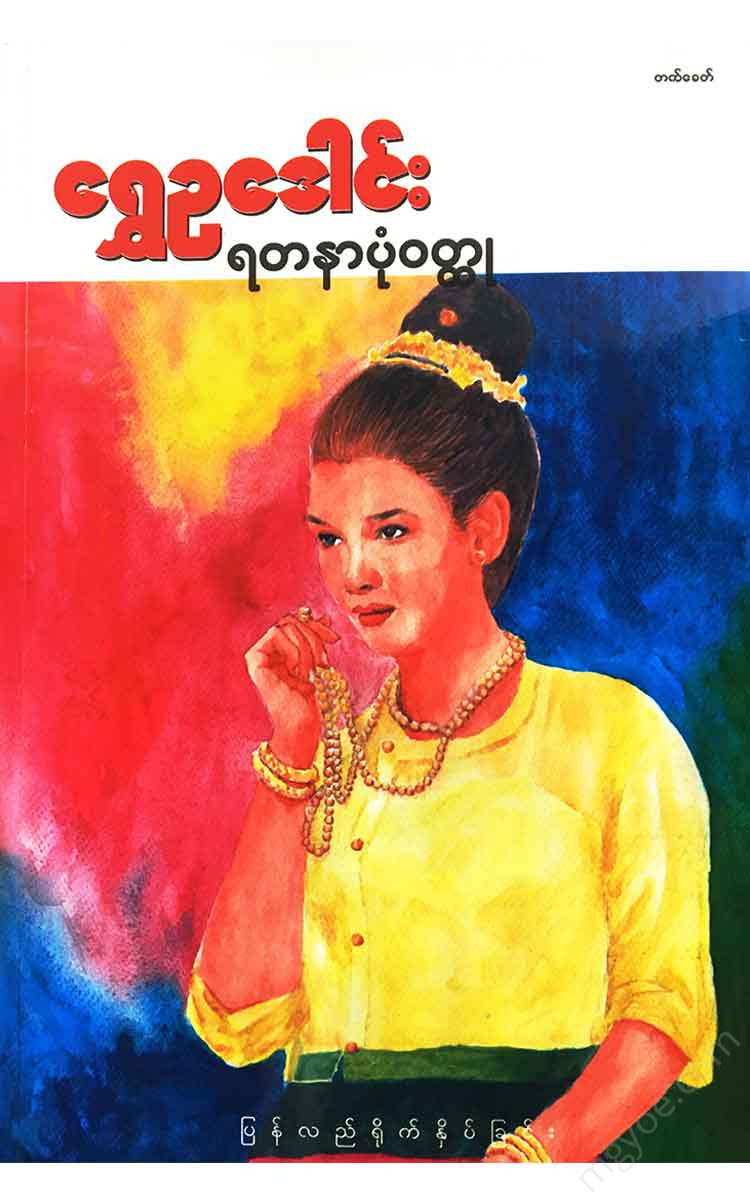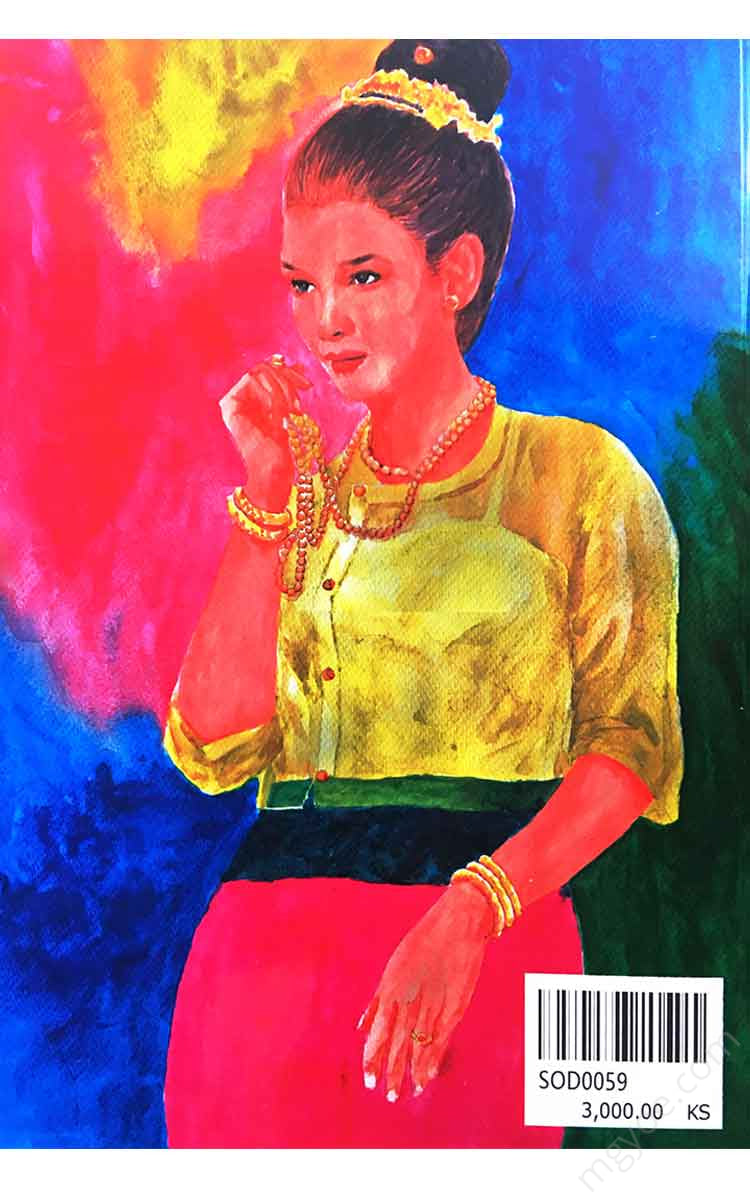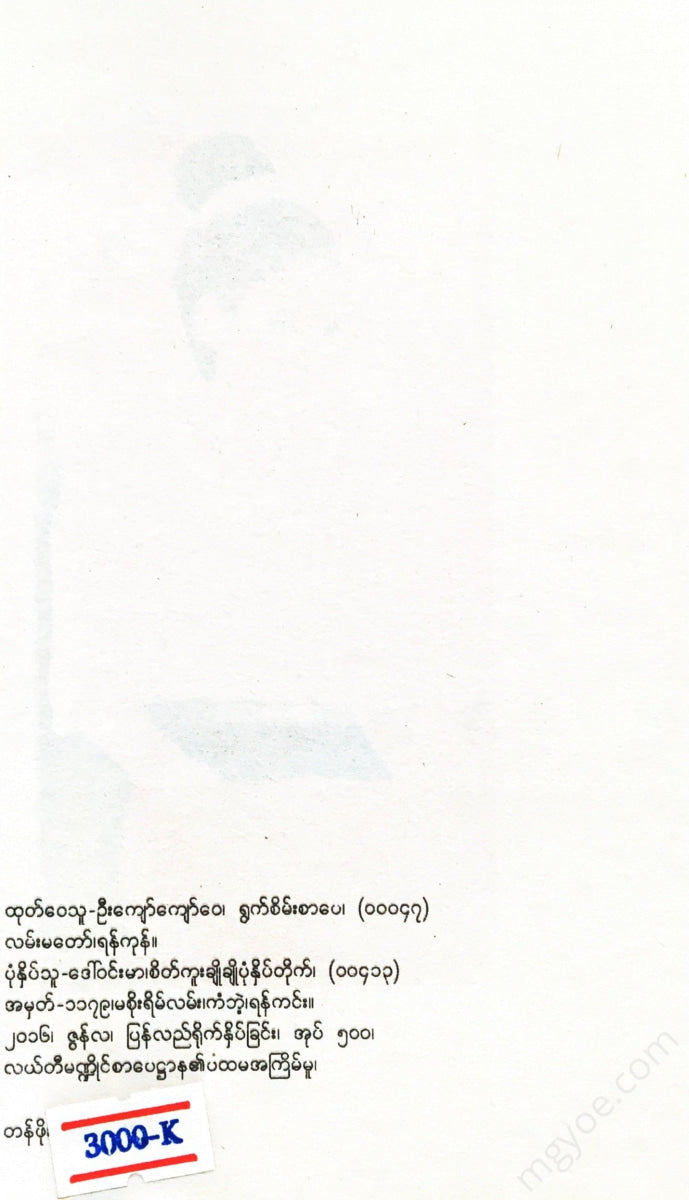စိတ်ကူးချိုချိုစာပေ
Golden Peacock - A Jewel Story
Golden Peacock - A Jewel Story
Couldn't load pickup availability
Introduction to the Yadanabon Vutthu
Meaning of clothing
The word "nava" is a Pali word. It literally means "matter." Therefore, the texts, documents, and books that are called "nava" are written to describe the subject of something or someone.
There are basically two types of novels. The first type is a novel that is written in a continuous manner so that the reader can read the events one by one and keep their attention. The second type is a novel that is written step by step to vividly reveal the mentality, character, and nature of the “characters” involved in the plot of the novel. Most modern novels fall into both of these types.
Brief history of the novel
The stories have been around since before the time of the Buddha. The great epics “Ramayana” and “Mahabharata” have been written in the Thekkada language. The Buddha himself preached the Dhammapada stories. The essence of the stories preached by the Buddha is to describe the events of someone’s present life. In this way, these stories also describe the events of the present life.
Inwa period clothing
In ancient times, only monks were writers. At that time, kings entrusted literature and religion to monks. There were also wise people. However, in the Ava and Nyaungyan periods, literature and religion were still intertwined, just as milk and water cannot be separated in milk mixed with water. Therefore, all the works written were only about the teachings of the Buddha and the Dhamma.
Among all the Burmese literary works that have been discovered so far, the oldest is the “Parayana Vutthu” written by Maha Thila Wunsa during the reign of King Shwe Nang Kyaw Shin, who conquered Ava in 863 CE. The Ava period was the Lankan and Po period, so there are not many prose works. Of the books written in Burmese prose, which are called “Vutthu”, only one “Parayana Vutthu” has been found.
Novels from the early Nyaung Ram era
The Nyaungyan period is generally referred to as the “Prose Era.” A major branch of Burmese literature emerged. Famous novels from the Nyaungyan period include:
1. Yasava Munawutthu. Written by Taung Phila Sayadaw. Written in 981 AD during the reign of King Nyaung Ram's son, King Nyaung Ram, who ruled from 967 to 991 AD.
2. The Manikundalini Novel. Written by Sangha Nath Sayadaw. Written during the reign of the Western Monks.
3. The Yadanakara Vutthu. Written by Maha Yadanakara Sayadaw.
Written in 1041 during the reign of King Wanbe Insan (1034-1060), the father of King Sane, these works are all about the Buddha's teachings.
The Late Nyaungyan Period and the First Buddhist Revolution
The Minister of the Palace was an innovator. It can also be called a revolutionary poet. The ancient poets and writers wrote based on the teachings of the Buddha and the teachings of the Buddha. The Minister of the Palace was a revolutionary and deviated from this tradition. In a way, he invented something new. The "Dharma" story was replaced by the "Shyungsha" story. The "Maniket Palace Story" written by the Minister of the Palace gave birth to modern novels. Modern novels emerged based on the seeds planted by the Minister of the Palace.
The Manikat Vutthu was written by the minister Padayaraja around 1060 CE, during the reign of King Sanayi (1060-1076).
Throughout the Konbaung period, the first clothing was worn by the
During the reign of King Alaungmin Dhammagyi in 1115-1122, Shwetaung Thihatu wrote "The Jewel Mirror." The Jewel Mirror is more modern than Manikat. It leans more towards sex, honor, brotherly love, and motherly love. It becomes more important.
Late Konbaung period
By order of the son of Bodaw Pagoda (1143-1100), the crown prince, eight wise men, including King Myawaddy U Sa, Ramakan U Toe, and Ramakan U Lam, wrote the great epic "Rama Nan Dwin Jataka".
During the reign of King Bagyidaw Pagoda (1101-1199), King Myawaddy wrote the Enaung Nangdwin Jatka. U Kyin U wrote the plays.
During the reign of King Mindon in 1214-1240, Queen Hlaing Tsek Khaung Tin wrote the court dramas “Indrawansa” and “Vijayakaari”. U Punya wrote plays.
These stories depict life based on the love of brother and sister.
The Second Novel Revolution
Minister Padayat Raja led the first revolution in the field of religious literature with Maung Mae Chit novels.
On the 8th day of the full moon of Ta Saung Mone in the year 1147, the Burmese monarchy collapsed. King Thibaw was captured and taken away by the English on the ship Mya Man Sakya. Burmese literature and religion began to fade. The light of Buddhism had faded. As the sun was setting, darkness gradually enveloped the entire world. As the light of the Dhamma began to fade, the darkness of sensual pleasures followed. Immoral things appeared in droves like mushrooms.
The times have changed, different from the past. The times have changed, different from the past.
The great court dramas written by Myawaddy King. Queen Ma Mya Lay. Hlaing Theik Khaung Tin and the plays written by U Kyung U and U Punya have become obsolete with the fall of the throne. Those great court dramas and plays only dealt with the affairs of the throne, the courtiers, the courtiers, and the princes. Therefore, those dramas have lost their charm for the people of the fall of the throne... In addition, the rich, merchants, farmers, and the poor people who remained in the royal family also yearned for their own natural narratives. They begged for the blood of those who would write great dramas of love, friendship, happiness, and sorrow.
The second Buddhist revolution was conceived in 1902, Burmese calendar 1264.
In 1264, “Robinson Crusoe” was translated directly from English into Burmese.
In 1266 (1904), Jane Hla Kyaw retitled “The Count of Monte Cristo” as “Ko Yin Maung Ma Mae Ma” and translated it into Burmese terms. The novel “Ko Yin Maung, Ma Mae Ma” became very popular. It was very popular. The novel was well-received, and subsequent novels appeared in rapid succession.
The sour leaf is a Maung Mhoi novel. The Maung Shin - Maung story novel, the Saw Pe - Saw May novel, the Mya Kalay novel, the Sein Talay Mya Talay novel, the Sar Taung Khae novel, the Maung Ma Na and Ma Than Kha novel, etc. have emerged one after another.
Around 1272, U Lat Ray's Shwe Pyi Soe and Sapae Pin novels appeared. Around 1276, a Lepati Pandit named Maung Khin Maung of Mandalay wrote the Khin Myint Gyi and Tin Tin Mya novels.
Then, Pi Moe Ning, Mya Myo Lwin, Maha Swe, Shwe U Daung, Dagon Khin Khin Lay, and Dagon Nat Shin decorated the temple with white and purple flowers.
Currently, the great writers of the late World War II era, including Tant, Thadhu, Zawana, Thakado, Thawta Swe, Aung Soe, Journal Kyaw Ma Malay, Khin Myo Chit, Thakin Ba Thaung, and others, are creating new and innovative works.
Jewelry-like garment
The book "The Jewel of the Golden Peacock" was first printed by the Thuriyasa Printing House in 1917. The book "The Jewel of the Golden Peacock" was a translation of the English novel "East Lynne". The author of "The Jewel of the Golden Peacock" was the first to translate detective novels from English novels. It is difficult to distinguish between "The Jewel of the Golden Peacock" and "The Detective Maung San Shar". For the reader, "The Jewel of the Golden Peacock" is "Maung San Shar", and "Maung San Shar" is "The Jewel of the Golden Peacock". The Minister of the Ministry and "The Princess of the Golden Peacock" are the ancestors of the period novels. The King of Myawaddy, Ma Mya Lay, and Princess Hlaing were the fathers and mothers of the period novels. In that case, "The Jewel of the Golden Peacock" is one of the two great uncles of the period novels. The real name of the writer who is famous as "The Jewel of the Golden Peacock" is "U Pe Thein". He currently lives in Mandalay.
Summary of the story of Yadanarpon Vutthu
Yadanabon Mandalay Golden City East Officers Quarter (Civil Line)





